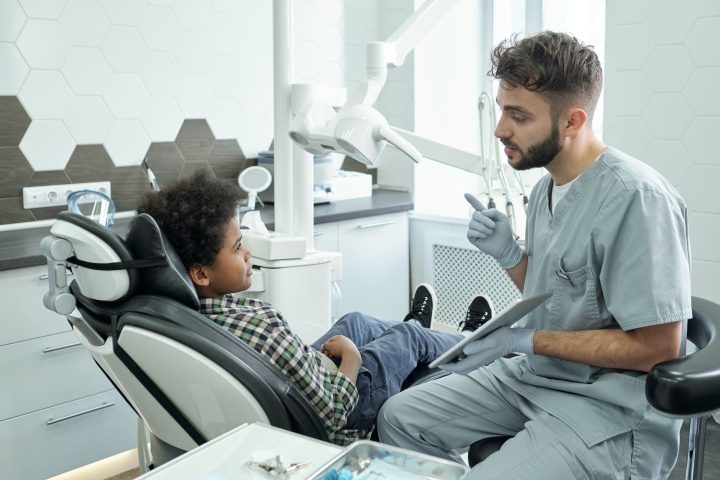The dental health of your child is paramount. As a parent, you need to be aware of the various dental issues that could negatively impact your child’s oral health, and one such issue is premature tooth loss. While losing baby teeth is a natural occurrence that is often celebrated as a childhood milestone, premature tooth loss due to cavities, injuries, or developmental disturbances can lead to serious dental problems. In such cases, your child’s dentist could recommend a dental appliance called a space maintainer. But what exactly is a space maintainer? Does your child need one, and how can you take care of it? In this blog, we’ll delve into these queries in depth.
What Is a Space Maintainer?
A space maintainer is a custom-made dental appliance that keeps the space open when a baby tooth is lost prematurely so that the permanent tooth can emerge in the right position. Baby teeth are placeholders for permanent teeth. They guide the permanent teeth to grow in their correct positions. So, if a baby tooth is lost too early, the adjacent teeth may drift into the space, causing the permanent tooth to emerge in a wrong position, leading to overcrowding or misaligned teeth. A space maintainer prevents this from happening by holding the space left by the missing tooth until the permanent tooth is ready to emerge.
Different Types of Space Maintainers
Depending on your child’s needs, a pediatric dentist may recommend different types of space maintainers. Here are the main ones:
1. Crown and Loop
One of the most commonly used space maintainers for children is the Crown and Loop. This small plastic device is designed to fit over a tooth, providing stability and holding it in place for an extended period, ranging from several months to years. Unlike some other space maintainers, the Crown and Loop requires no adhesive for attachment.
2. Distal Shoe
The Distal Shoe space maintainer is an effective treatment option for children with missing or damaged front teeth. This type of space maintainer consists of a base plate and an arch support. When assembled, these components fit over the affected area, providing stability and holding it in place.
3. Lingual
The Lingual space maintainer is specifically designed for the front teeth. Its primary function is to keep the child’s teeth apart, preventing them from touching each other. This space maintainer is particularly useful for children who desire a permanent adult-like smile but may not be ready for or have access to braces.
How to Take Care of Your Child’s Space Maintainer
Proper care is essential to ensure the effectiveness and longevity of the space maintainer. Here are some tips on how to take good care of your child’s space maintainer:
1. Encourage Good Oral Hygiene
Teach your child to brush their teeth twice a day and to floss daily. This will help prevent plaque buildup around the space maintainer.
2. Avoid Sticky and Hard Foods
Chewing gums, caramel, and hard candies can loosen the space maintainer or get stuck in it.
3. Inform Your Child
Make sure your child knows not to push or pull the space maintainer with their tongue or fingers, as it can loosen or dislodge it.
Conclusion
A space maintainer can be crucial in ensuring the healthy development of your child’s permanent teeth. However, it is not a substitute for good oral hygiene. Encourage your child to maintain a regular oral hygiene routine and make regular visits to the dentist to ensure their dental health is on the right track.
Looking for a way to maintain your child’s dental health? Look no further than Waban Dental Group – Pediatric Dentistry & Orthodontic. Our team of experts provides a full range of dental services for your entire family, including dental space maintainers. Established in 1983, we pride ourselves on setting exceptional care standards. Contact us today to schedule an appointment and keep your child’s smile healthy and happy!









